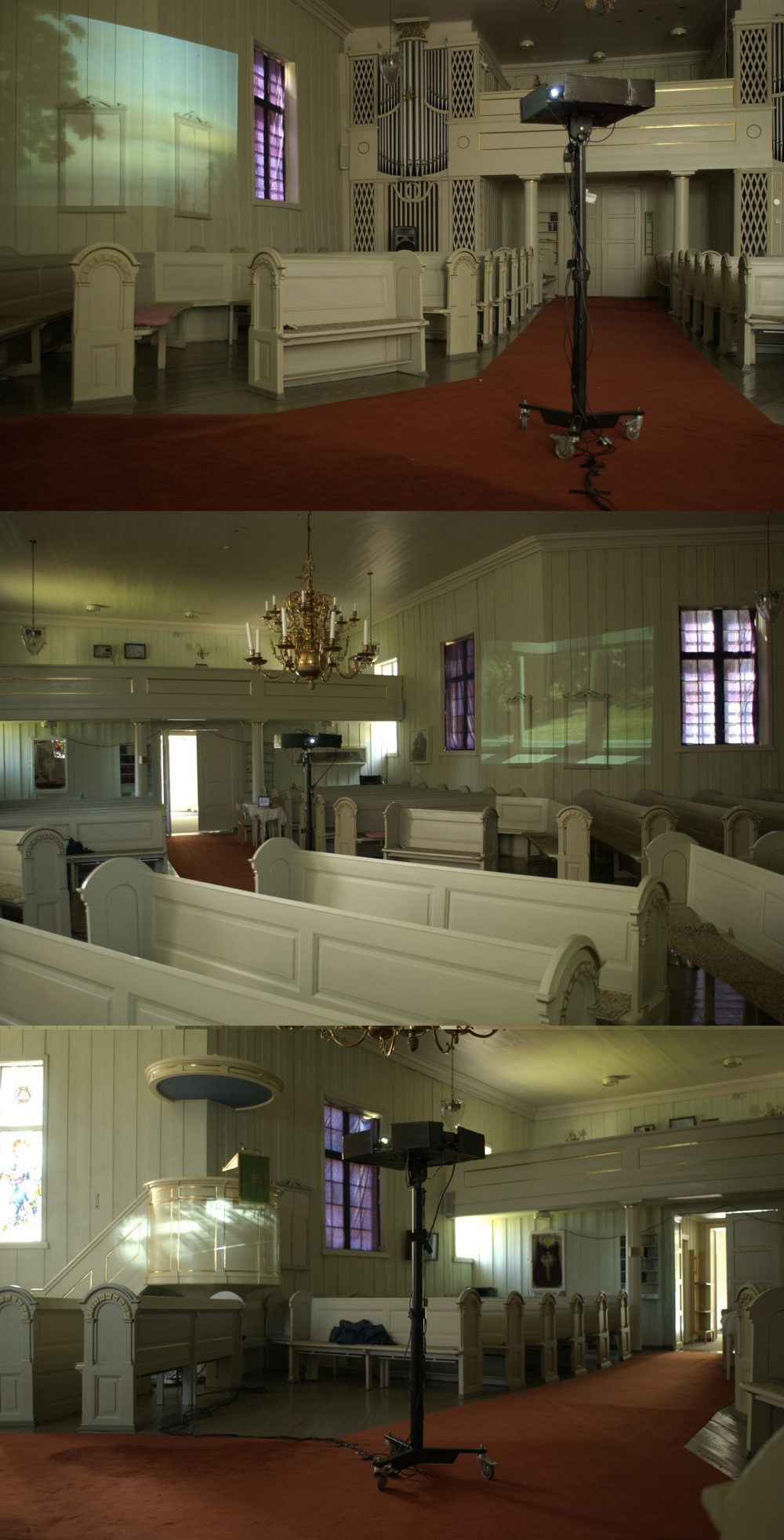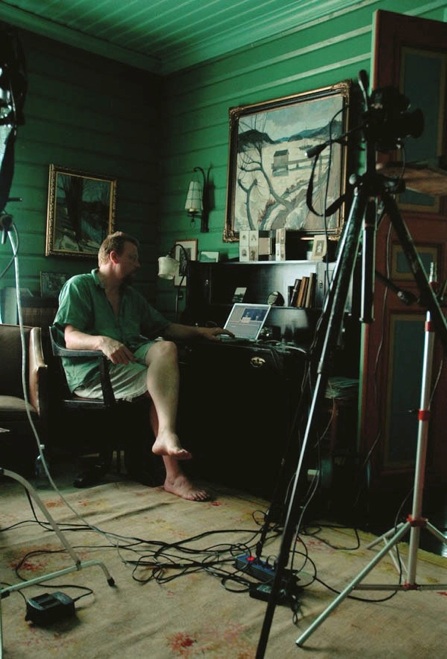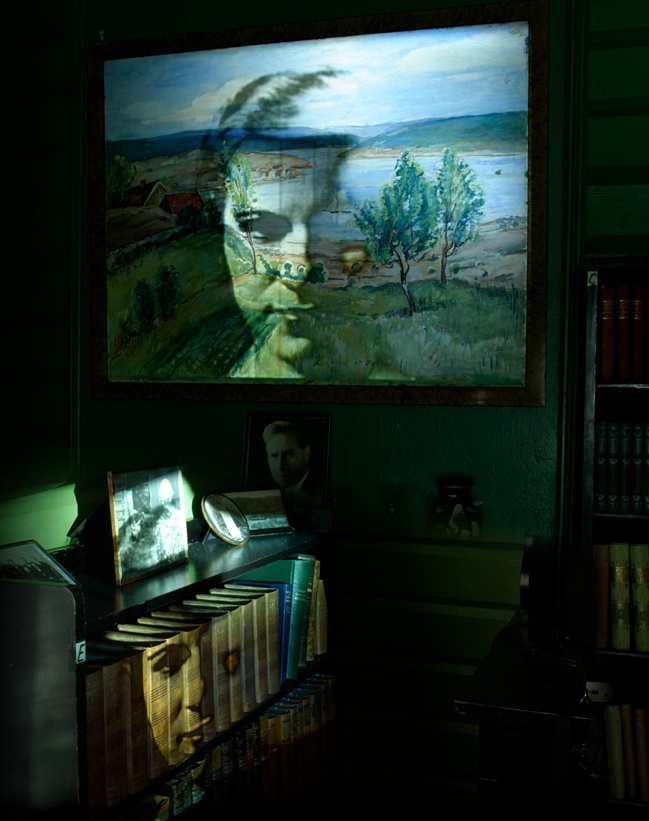The project was based on the Norwegian author Olav Duun’s very last book: “Floodtide of fate” (Menneske og maktene – 1938). The book was written and published in a turbulent time for the world. The climax of the book is the flooding of a small community living on an island off the west coast of Norway.
Close to the end of the text, a central character descends from a peak on the island where a small group rescued themselves from the flood. Seeing the local church, with the people who had been praying for their rescue there, all washed to sea, and the havoc made, he exclaims : “Yes.. God gives and God takes. Now he has taken away my religiosity too. I thank him for that also”
My outset was to observe and depict two aspects in the life of Duun. The private man and the prolific author, averaging a new book every year. The conflicting inner and outer life, in a way.
The home, where one can expect to have a certain influence and an expected run of events. And in the outer, where economic, political, man or nature-made forces intrude and, outside of one’s own influence, seemingly turn everything into turmoil.

Images and sounds were sampled inside and outside the house of Olav and Emma Duun in Holmestrand, Norway, where he lived his adult life working as a teacher at the local school. Frequently going by train, to meet up with his publishers in Oslo.

Duun’s house is now a museum with a flat installed on the 1. floor for researchers into his life and work. Here I could stay and work at intervals during the year of the fellowship. Most of the papers published on Duun are situated there.
Holmestrand is about 1 hour’s drive from where I live. The work was mainly done on weekends. In the winter-season I basically had the house, with the remains of the Duun family life, to myself.
The published work consisted of two digital prints and three time-lapse animations with processed sounds sampled from the house. The digitizing was done by two microphones and three cameras that I moved around in the house. Files downloaded directly to disk and processed later.
A modern coffee-percolator was situated in the kitchen of the house. I discovered that the machine had a flaw. In the last stages of percolating it gave off nearly human “sigh’s”. I thought this significant and useful, and it timed the animation loops I made, to 6 minutes and 24 seconds.
The timelapses were inspired by stripes of sunlight passing through the house during the day. Moving over furniture, bookcases and kitchen-utensils.
Using old ephemeral black and white footage, I recreated this light with a projector at night. Photographing the projection, frame by frame, then sequencing it again.
I also worked on timelapses from the exterior of the house and at the central train station in Oslo, where Duun would interface with his publishers.
The local cultural representative suggested I present the work I had prepared for three projectors, at the Holmestrand church, A rare three-arched building ( a “korskirke” ca.1167 ).
Sometimes the projections showed explicit relationship with each other and sometimes not. To me these fragments from a house, of a life, revealed a whole.

I have also shown the piece as a live event in a digital cinema-projection at Filmens Hus in Oslo, where I performed and remixed live, in sound and image software, with MIDI-controllers and a head-microphone.
Research for possible influences to the book, Duuns last, eventually led to my project in Gernika 2007.

